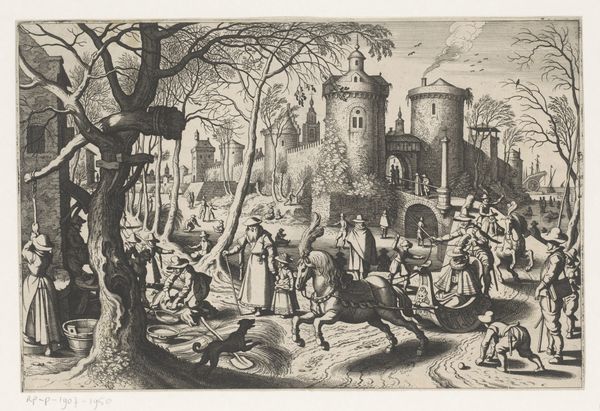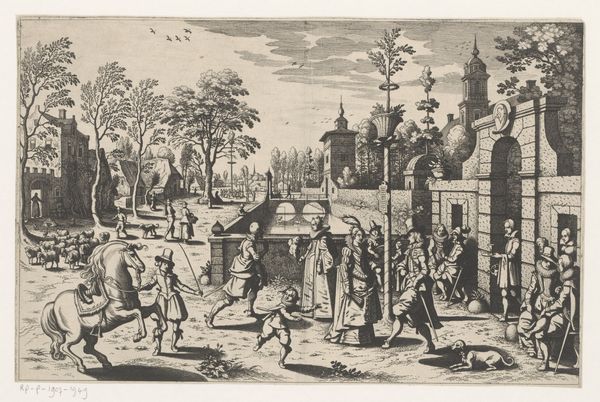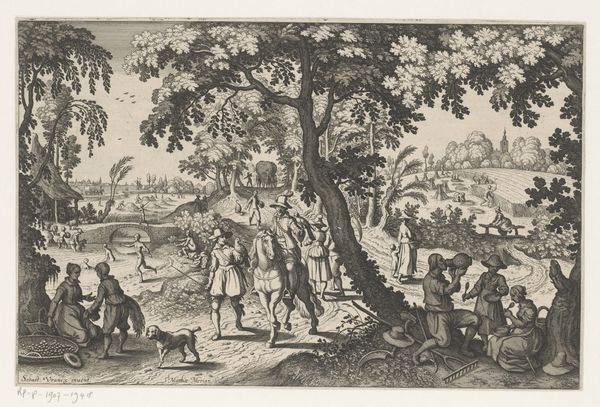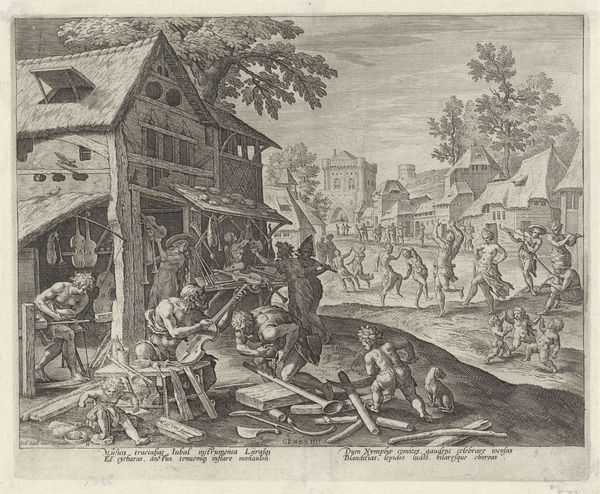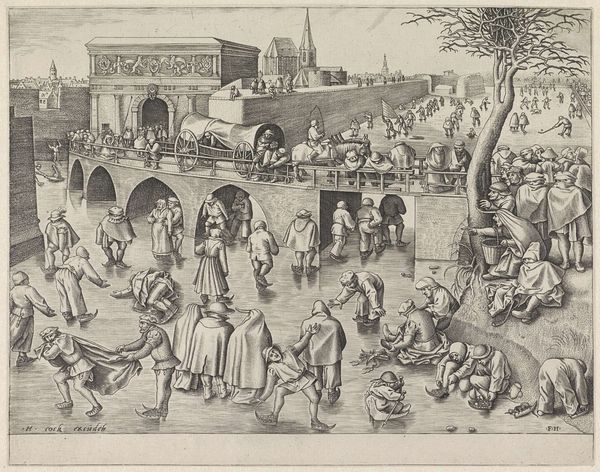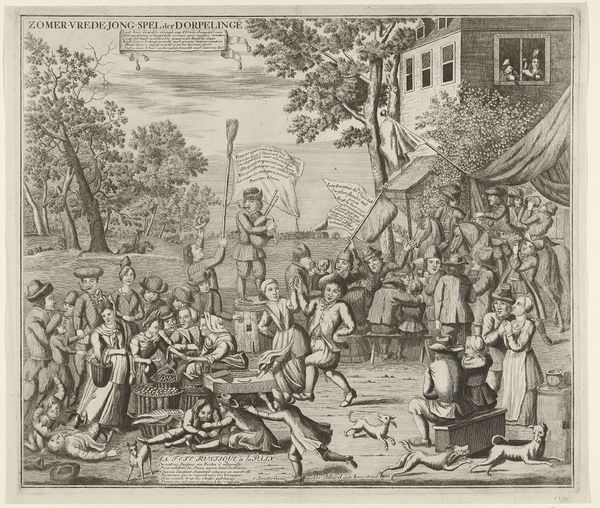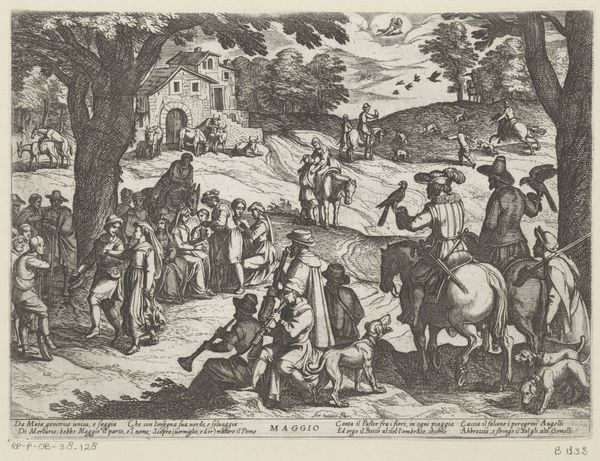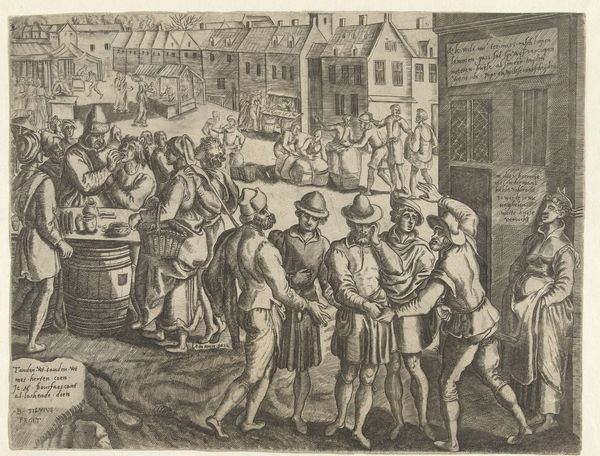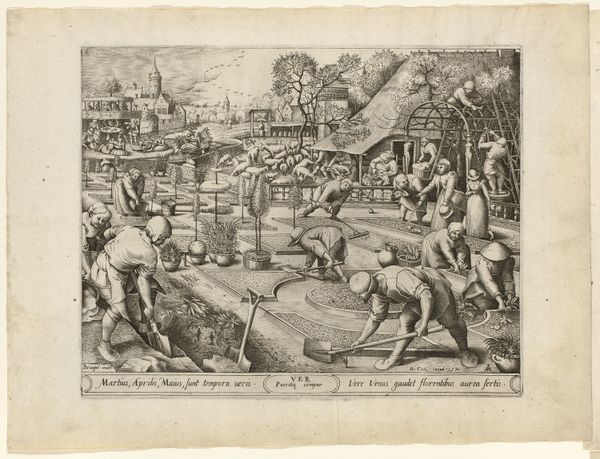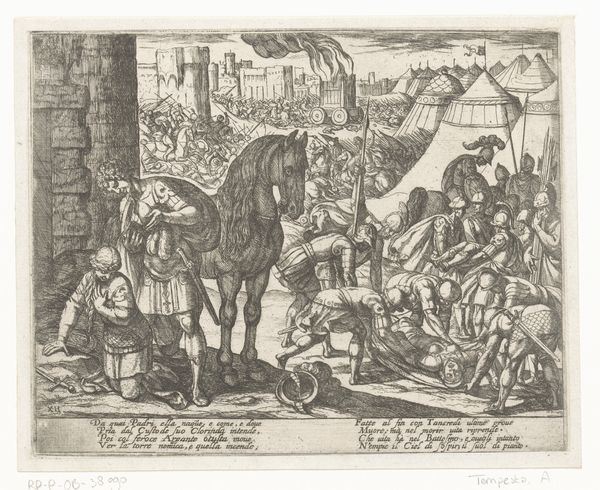
print, etching, engraving
#
baroque
#
pen drawing
# print
#
pen illustration
#
pen sketch
#
etching
#
old engraving style
#
landscape
#
pen-ink sketch
#
genre-painting
#
engraving
Dimensions: height 246 mm, width 379 mm
Copyright: Rijks Museum: Open Domain
Editor: This engraving, "Herfst," which means Autumn in Dutch, was created by Matthäus Merian the Elder after 1622. It's teeming with life. What do you see in this piece? Curator: It's fascinating how Merian uses the image of the season as a cultural container. Look at the sheer abundance of autumnal activity – harvesting, games, people bustling. It mirrors the concept of "Autumn" not just as a season, but as a state of being: a time of plenty, but also a premonition of colder, leaner times ahead. The people busily preparing for winter speak volumes. What echoes of past rituals or communal memory do you find reflected in the symbolism of the piece? Editor: Well, the apple harvest stands out – it feels almost Biblical, a reference to original sin but also the bounty of the land. I am wondering about the children playing with hoops, almost carelessly while other members are working in the fields. Curator: Exactly. The games hint at the rituals related to the harvest festivals - a sort of controlled revelry that reminds everyone of a fruitful ending, while pointing towards continuity and social cohesion. It’s a snapshot of collective memory made visible, reflecting deeply ingrained cultural rhythms and anxieties. But don't you think it all creates an ordered world where everybody is aware of its role? Editor: That makes so much sense. It’s not just about the activity but how it links everyone to the past and future. Thanks for opening up this whole new layer of understanding for me. Curator: It’s about seeing the visual language as a mirror reflecting a culture's hopes, fears, and enduring spirit. It was my pleasure.
Comments
No comments
Be the first to comment and join the conversation on the ultimate creative platform.
